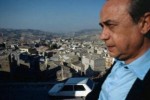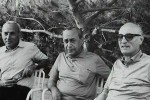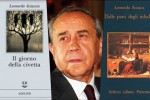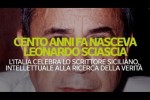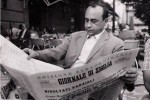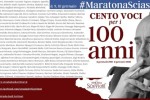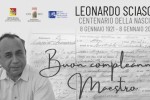MAMT||Museo Mediterraneo dell' Arte, della Musica e delle Tradizioni (EN)
|
08 January 2021
Iniziative (EN) -
MAMT – Mediterranean Museum of Art, Music and Traditions
 Great influx of links and contacts on the multimedia platform of the Museum of Peace - MAMT for the centenary of the birth of Leonardo Sciascia.
Great influx of links and contacts on the multimedia platform of the Museum of Peace - MAMT for the centenary of the birth of Leonardo Sciascia.
There is no emphasis on calling him one of the greatest and most influential Italian intellectuals of the twentieth century. "Probably the only figure that can be approached to Sciascia, despite the evident and very profound differences due to the impact on the cultural and political debate and the extraordinary ability to interpret his contemporaneity, is that of Pier Paolo Pasolini" said the president Michele Capasso in the room where the great writer's books and documents are kept. It is no coincidence that Pasolini himself became aware of Sciascia's talent right from his debut in the post-war period, with the Fables of the Dictatorship, in which a ferocious political satire was already revealed behind the stylistic code of Aesopian fables.
Beyond the civil passion, a trait that unites the two great authors is versatility: Sciascia was a writer, playwright, essayist, journalist, teacher, poet and even politician, first independent in the ranks of the Communist Party (from which he left because he did not share the line of the "historical compromise") and then for the Radical Party, of which he shared the great guarantee battles.
In addition to the immediate precedent of his fellow countryman Pirandello, Sciascia was inspired, as a young man, by the civic commitment of Elio Vittorini and the lucid eye of Vitaliano Brancati, in open contrast to the charms of D'Annunzio and the incendiary exaltations of Futurism, in which he recognized the nefarious seeds of the fascist mentality; in maturity, he took as a model the stylistic clarity of Alessandro Manzoni, the logical rigor of Diderot and confessed a true adoration for Stendhal; As a constant reference since his youth, a lesser known author of singular acumen is remembered, Paul-Louis Courier, a learned Greek scholar and master in the art of the pamphlet of denunciation.
Among the works in the museum: The day of the owl, perhaps the author's best known book, which tells the murder of the communist trade unionist Accursio Miraglia by the mafia in a clever detective novel style; the fictionalized essay Death of the Inquisitor, a violent accusation against Catholic revisionism that celebrates freedom of thought as an irreducible value; To each of him his own, powerful denunciation of conformity and silence; Todo Modo, vertiginous and visionary satire, between grotesque and hieratic atmospheres, of the ecclesiastical hierarchies; The disappearance of Majorana, one of the favorite books by the same author, a work that escapes the mold, a philosophical essay disguised as a biographical story narrated also in this case as a thriller; Candido, or a dream made in Sicily, a brilliant reinterpretation of Voltaire's classic, whose paradoxical and hyperbolic satire is taken up to show the most contradictory and corrupt aspects of the First Republic. In the large video walls of the Museum you can enjoy the happy cinematographic transpositions of Sciascia: The day of the owl by Damiano Damiani (1968) and two films by the great Elio Petri, To each his own (1967) but above all the impressive Todo Modo (1976), in whose free reinterpretation of the novel, the murder of Aldo Moro, played by Gian Maria Volonté, is shown with disturbing premonition.
Some of Sciascia's most sensational public stances are linked to the Moro kidnapping (he was mistakenly given the slogan “neither with the State, nor with the Red Brigades”); in his years of radical militancy he will devote himself mainly to the parliamentary commission of inquiry into the kidnapping and assassination of the Christian Democrat leader.






